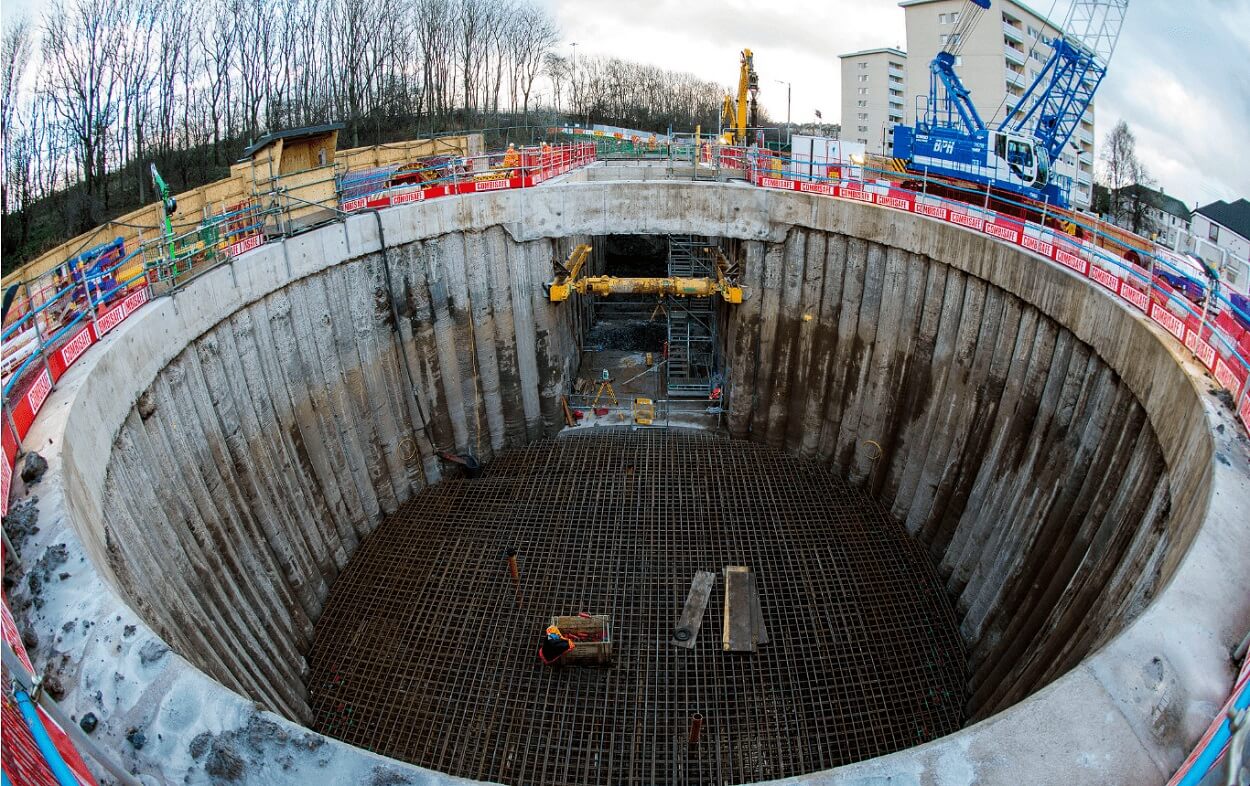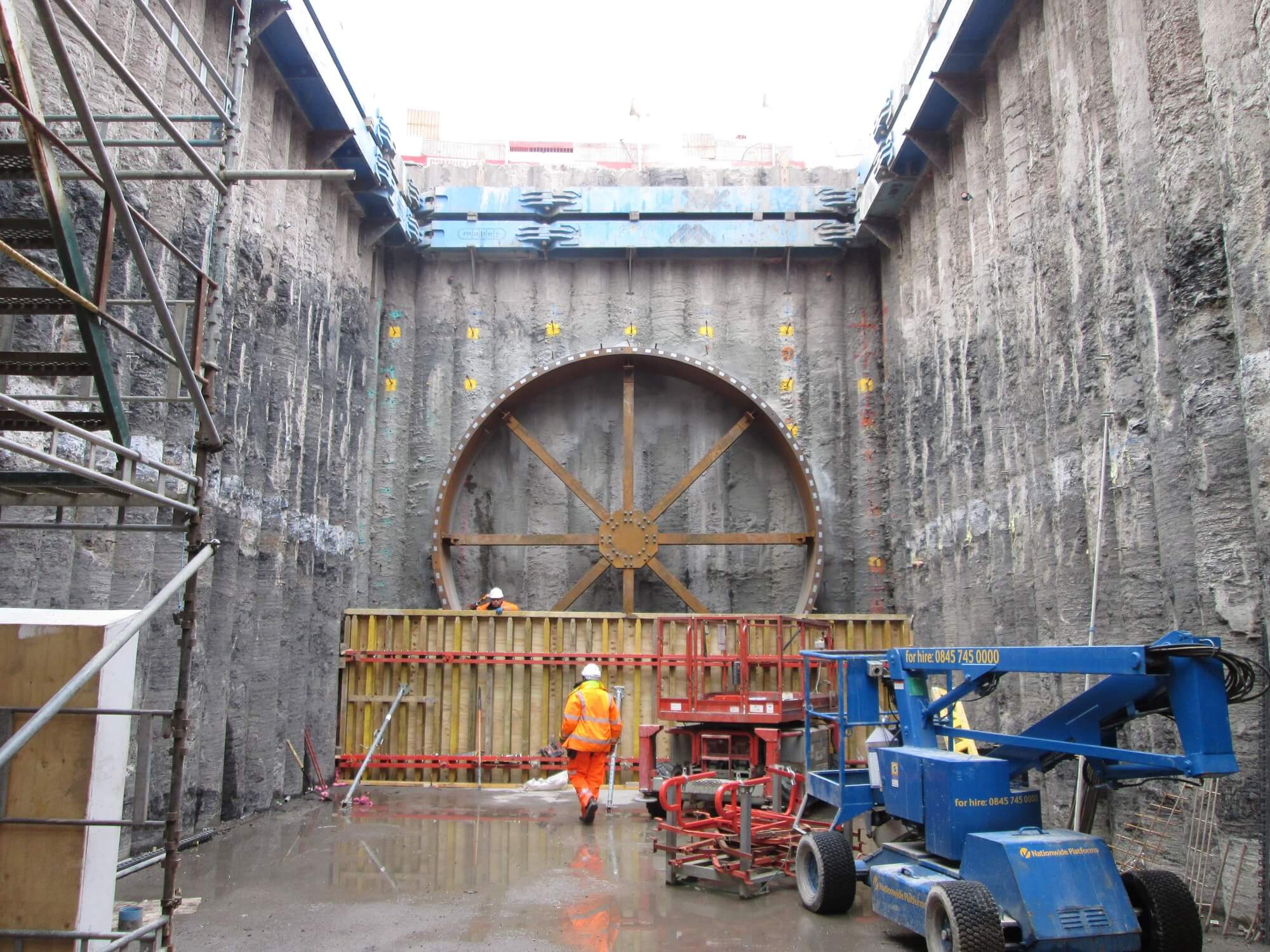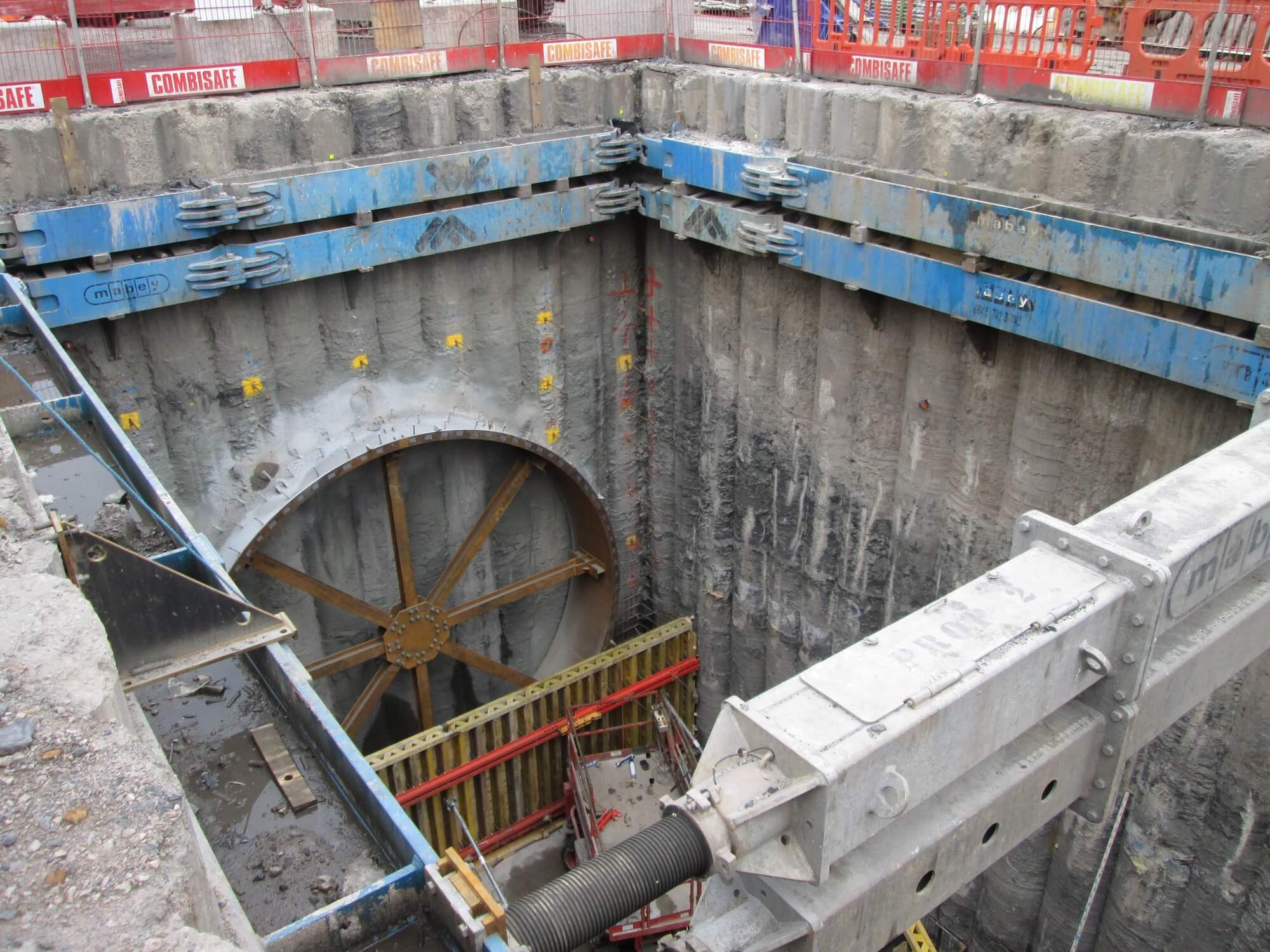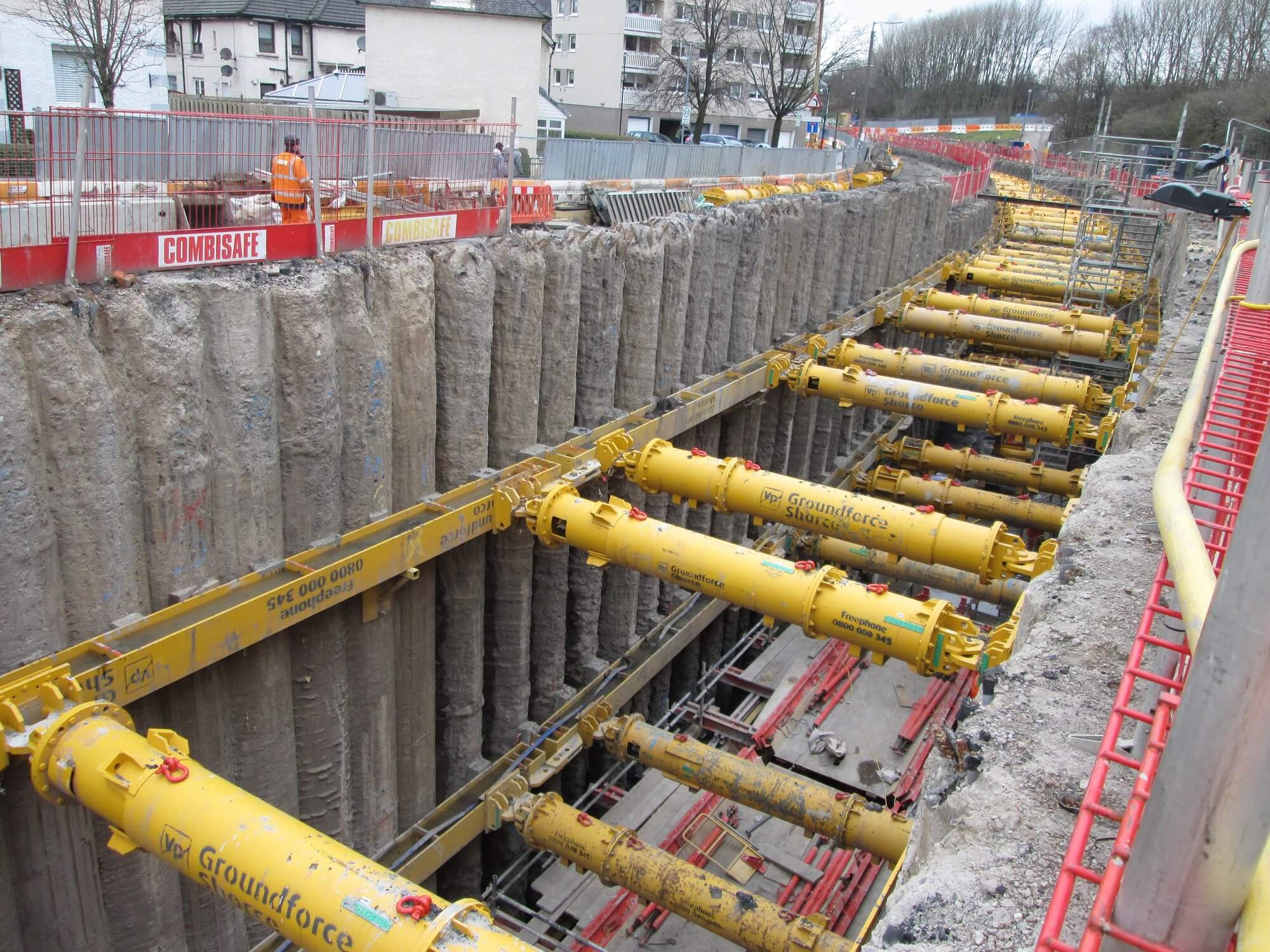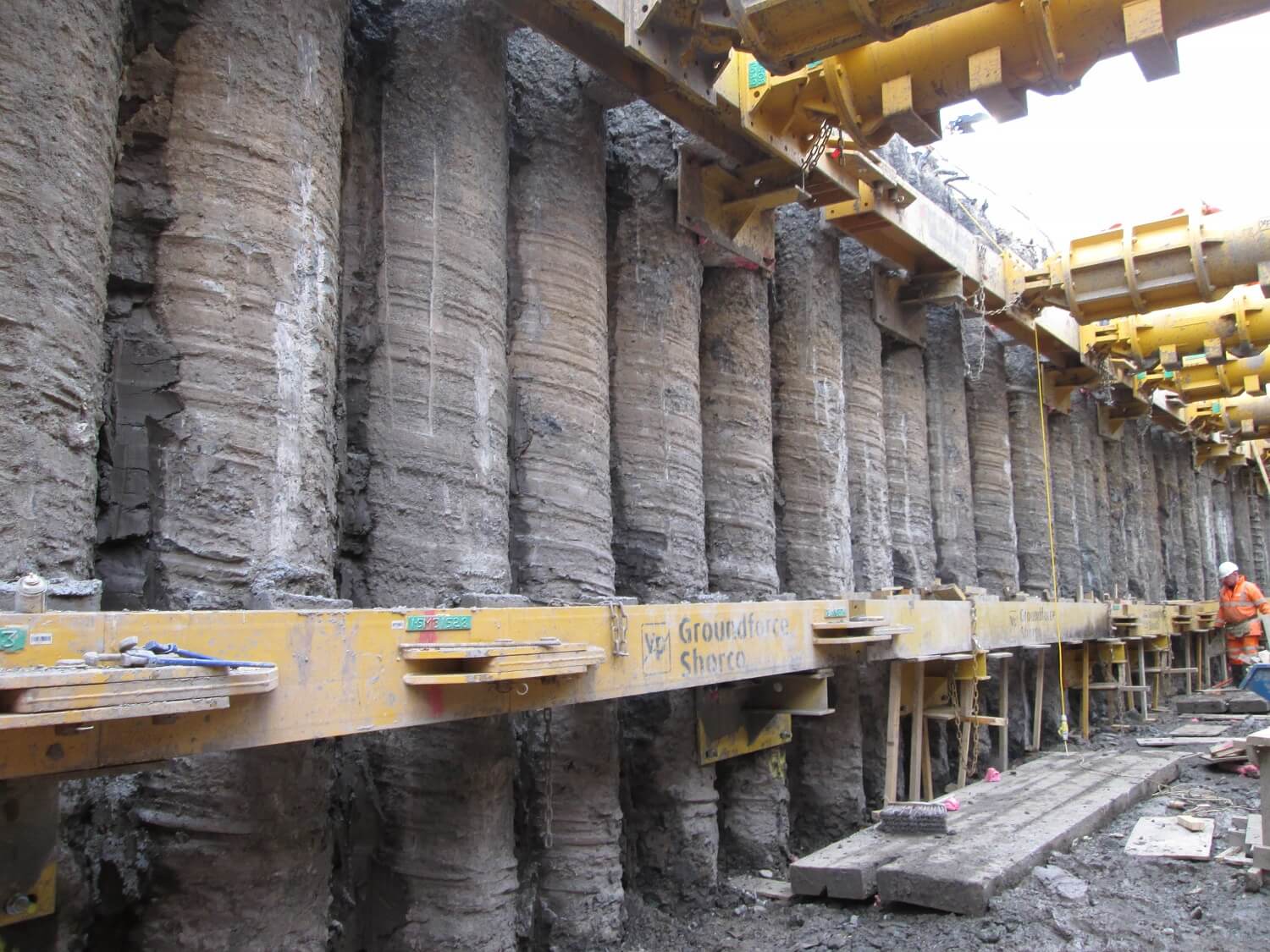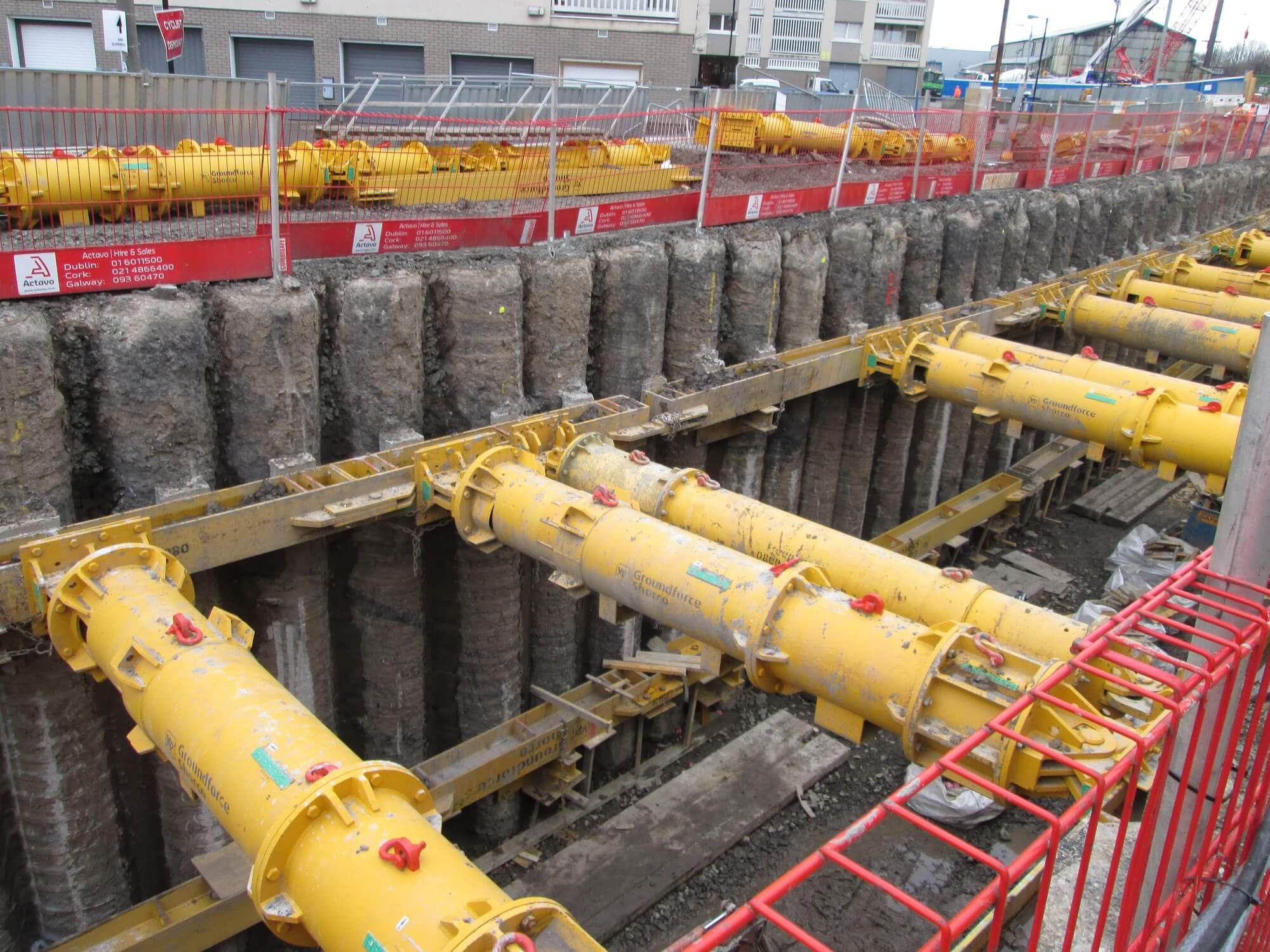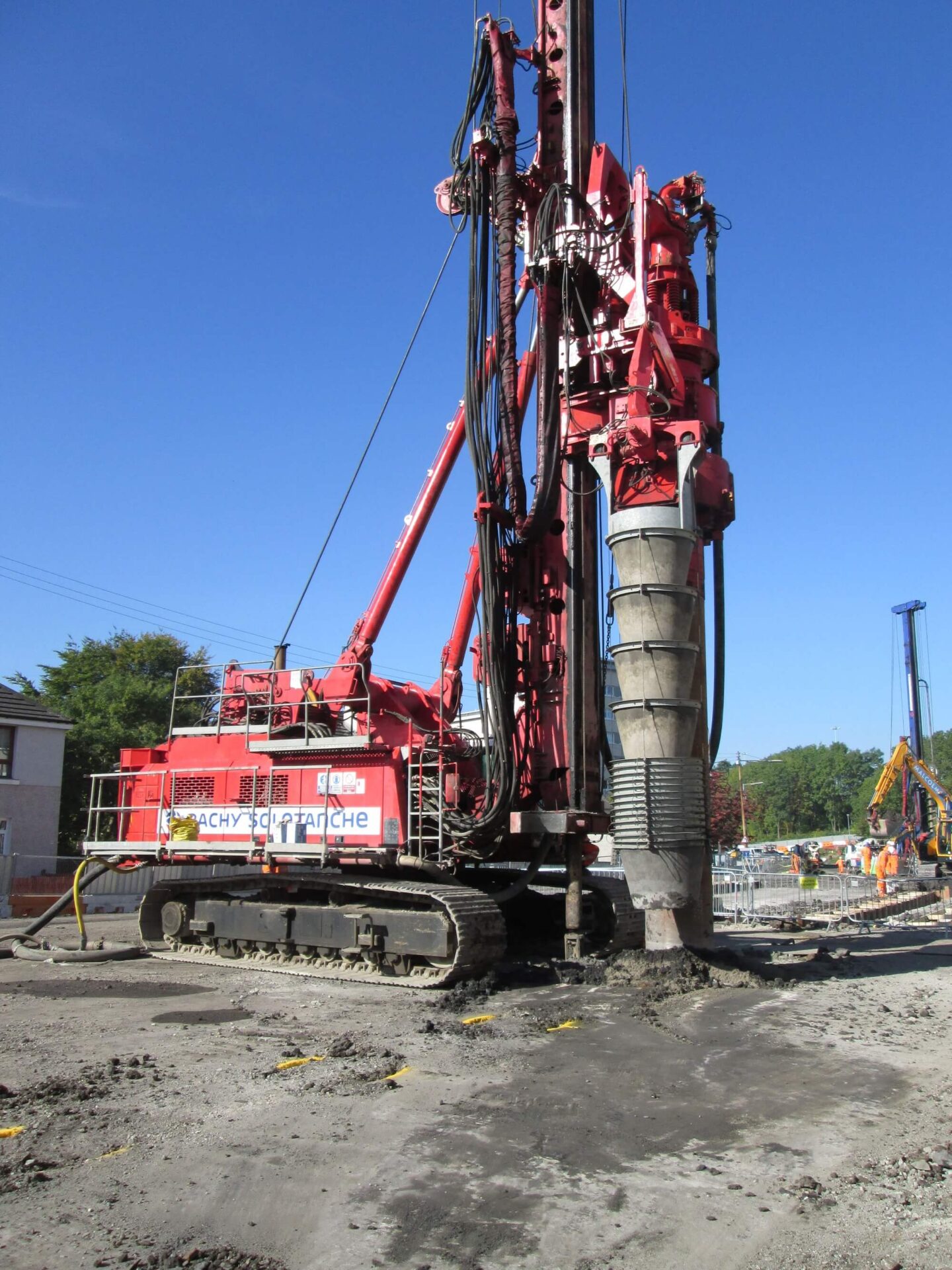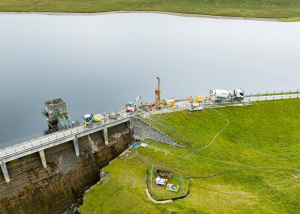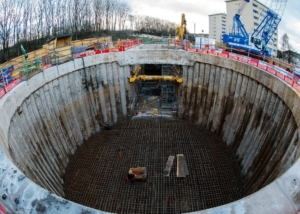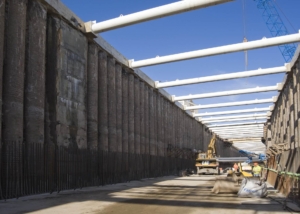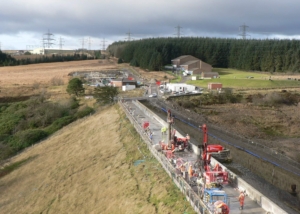PROJECT OVERVIEW
Shieldhall Tunnel is Scotland’s largest wastewater tunnel, measuring 4.70m in diameter and 3.1 miles long, and forms part of the biggest upgrade of Glasgow’s wastewater network in more than a century. The £85m scheme runs between Craigton Industrial Estate and Queen’s Park and resolves water quality and reduces flooding issues at key locations in the area served by the Shieldhall Waste Water Treatment Works.
Bachy Soletanche was appointed by Costain and VINCI Construction Grands Projets joint venture to deliver the geotechnical element of this flagship scheme.
PILING OPERATIONS
In total, the team constructed 675 piles during the 16-week contract. This comprised of 309 cased secant piles (CSP) to form a shaft, service chamber and tunnel boring machine (TBM) launch chamber – these piles are 900mm in diameter and were drilled to a depth of up to 16m using a BG40 CSP piling rig. An additional 366 continuous flight auger (CFA) piles were constructed to form a contiguous piled wall for the cut and cover tunnel section which runs along Jura Street – these piles are 750mm in diameter and were drilled to a depth of 15m using a SR70 CFA piling rig.
The piles were all reinforced to the full depth with pre-fabricated steel cages with the exception of the TBM chamber’s headwall. Here, the site team adopted an innovative solution using glass fibre reinforced polymer bar to provide a ‘soft-eye’ for the TBM to bore through. Whilst this approach is commonly used in diaphragm wand rotary bored piling, it is not a solution that is frequently used in CFA piling.
Bachy Soletanche’s designers worked closely with the project engineers and cage manufacturer to deliver a suitable installation method.
LOGISTICAL PLANNING
The location of the site for the Shieldhall Tunnel provided the team with a number of challenges which needed to be overcome. The scheme was the width of the road and therefore the sequencing and logistical planning became critical. The piling platform was installed just ahead of the piling works and delivering materials to site required accurate programme planning. Daily meetings with the client and the supply chain ensured the safe and successful delivery of the works.
